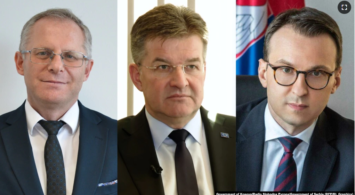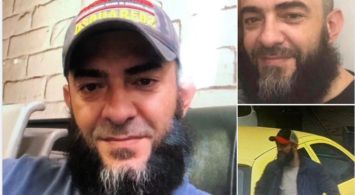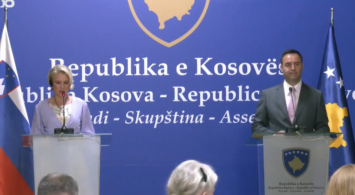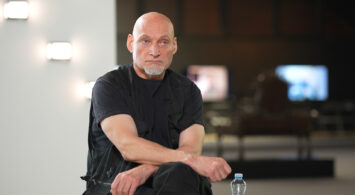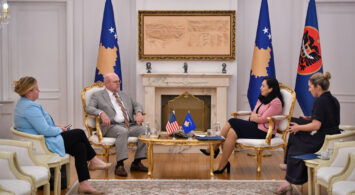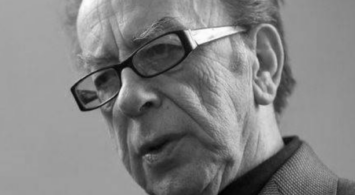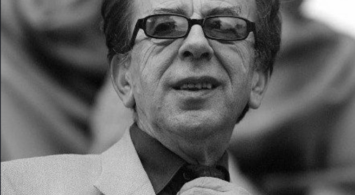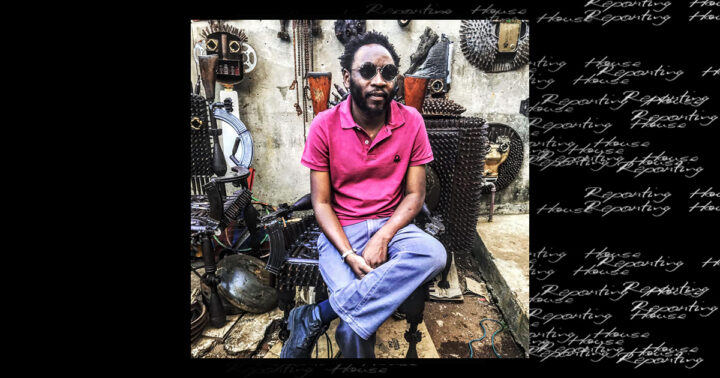
Gonçalo Mabunda
The Throne of Hopeless and Uncertainty
Gonçalo Mabunda
Mixed media
156 x 60 x 115 cm
61 3/8 x 23 5/8 x 45 1/4 in
(02900)
Description: Gonçalo Mabunda’s unsettling, totemic sculptures explore the political history of the artist’s home country of Mozambique, particularly the bloody civil war that gripped the country for more than 15 years. Mabunda repurposes the detritus of conflict—AK-47s, rockets, land mines, and shell casings, for example—turning these destructive objects into stunning masks, furniture, and other sculptures. Mabunda’s practice undermines the supremacy of war and forges a new tradition of beauty. His work calls to mind the modernist experiments of Georges Braque and Jean Dubuffet as well as the traditional arts of Africa. Mabunda has exhibited at the Guggenheim Bilbao, the Centre Pompidou, the Mori Art Museum, and the Brooklyn Museum. He was the first Mozambican artist to present at the Venice Biennale.
Bio:
Born in 1975, Maputo, Mozambique
Lives and works in Maputo
Gonçalo Mabunda’s work is devoted to the memory of his country. Having known as his immediate environment the tragic civil war, which devastated Mozambique from the mid 70s up to recently, he uses weapons as the media for his pieces. Seven million weapons were stockpiled and hidden throughout the country. Here, art becomes a duty; that of remembering. He works at the studio Núcleo de Arte and in 1984, he took part in the project Transformation of weapons in art.
Gonçalo has been recurrently working on the motif of the Throne for a few years, alluding to the Western world’s interest in collecting the Chief Throne in traditional ethnic African art. The Throne also criticizes current African governments that too often tragically manipulate armed violence as a way to strengthen their power. The striking and beautiful objects he creates also convey, however, a positive reflection on the transformative power of art and the resilience and creativity of African civilian societies.
Collections
Centre Pompidou, Paris, France
The Tropen Museum, Amsterdam, Netherlands
Public Art Norway, Norway
The province Government, Norway
Army Museum, Netherlands
Army Museum, Sweden
Vatican Museums, Vatican
Projustitiae Fundation, Portugal
International Sculpture Park, China
National Museum of Uruguay, Uruguay
Tempietto del Carmelo, Italy
Museum of Saint Etienne, France
Musée international des arts modestes,France
Memorial de Caen, France
National Museum, Mozambique
Museum of Arts and Design (MAD), USA
Brooklyn Museum, USA
Parque da Davesa (Famalicao),Portugal
African Artists for Development, France
Victoria and Albert Museum (Purchase Grants fund), GB
Froni i Pashpresës dhe Pasigurisë
Gonçalo Mabunda
Media të përziera
156 x 60 x 115 cm
61 3/8 x 23 5/8 x 45 1/4 in
(02900)
Përshkrimi: Skulpturat e frikshme dhe totemike të Gonçalo Mabunda eksplorojnë historinë politike të vendlindjes së artistit, Mozambikut, veçanërisht luftën e përgjakshme civile që përfshiu vendin për më shumë se 15 vjet. Mabunda ripërdor mbeturinat e konfliktit—si AK-47, raketat, minat tokësore dhe gëzhojat, për shembull, duke i kthyer këto objekte shkatërruese në maska mahnitëse, mobilje dhe skulptura të tjera. Praktika e Mabunda-s sfidon supremacinë e luftës dhe krijon një traditë të re të bukurisë. Puna e tij sjell ndër mend eksperimentet moderniste të Georges Braque dhe Jean Dubuffet, si dhe artet tradicionale të Afrikës. Mabunda ka ekspozuar në Guggenheim Bilbao, Centre Pompidou, Mori Art Museum dhe Brooklyn Museum. Ai ishte artisti i parë mozambikas që prezantoi në Bienalen e Venecias.
Bio:
I lindur në vitin 1975, në Maputo, Mozambik
Jeton dhe punon në Maputo
Puna e Gonçalo Mabunda-s është përkushtuar për kujtimin e vendit të tij. Duke njohur si mjedisin e tij të menjëhershëm luftën tragjike civile, e cila shkatërroi Mozambikun nga mesi i viteve ’70 deri së fundmi, ai përdor armët si medium për veprat e tij. Shtatë milionë armë u grumbulluan dhe u fshehën në të gjithë vendin. Këtu, arti bëhet një detyrë; ajo e kujtimit. Ai punon në studion Núcleo de Arte dhe në vitin 1984 mori pjesë në projektin Transformimi i armëve në art.
Gonçalo ka punuar vazhdimisht mbi motivin e Fronit për disa vjet, duke aluduar në interesin e botës perëndimore për të mbledhur Fronin e Shefit në artin tradicional etnik afrikan. Froni gjithashtu kritikon qeveritë aktuale afrikane që shumë shpesh manipulojnë tragjikisht dhunën e armatosur si një mënyrë për të forcuar pushtetin e tyre. Objektet mahnitëse dhe të bukura që ai krijon gjithashtu përcjellin, megjithatë, një reflektim pozitiv mbi fuqinë transformuese të artit dhe qëndrueshmërinë dhe kreativitetin e shoqërive civile afrikane.
Koleksionet
Centre Pompidou, Paris, Francë
Muzeu Tropen, Amsterdam, Holandë
Public Art Norway, Norvegji
Qeveria Provinciale, Norvegji
Muzeu i Ushtrisë, Holandë
Muzeu i Ushtrisë, Suedi
Muzetë e Vatikanit, Vatikan
Fondacioni Projustitiae, Portugali
Parku Ndërkombëtar i Skulpturave, Kinë
Muzeu Kombëtar i Uruguait, Uruguai
Tempietto del Carmelo, Itali
Muzeu i Saint Etienne, Francë
Musée international des arts modestes, Francë
Memorial de Caen, Francë
Muzeu Kombëtar, Mozambik
Muzeu i Arteve dhe Dizajnit (MAD), SHBA
Brooklyn Museum, SHBA
Parque da Davesa (Famalicão), Portugali
African Artists for Development, Francë
Victoria and Albert Museum (Fondi i Blerjeve), Britani e Madhe




